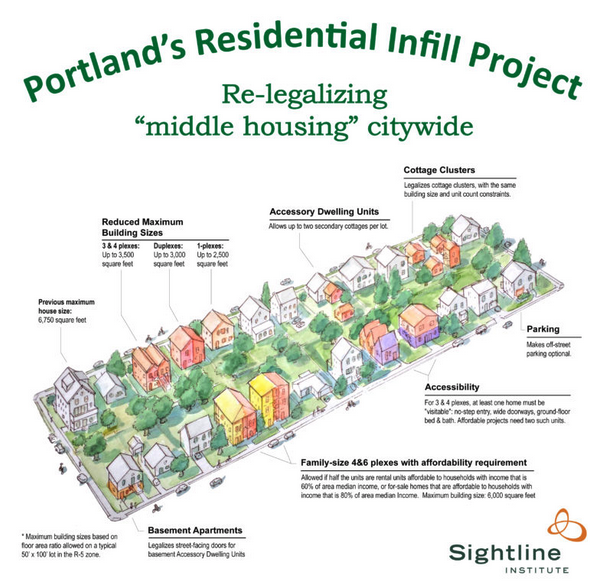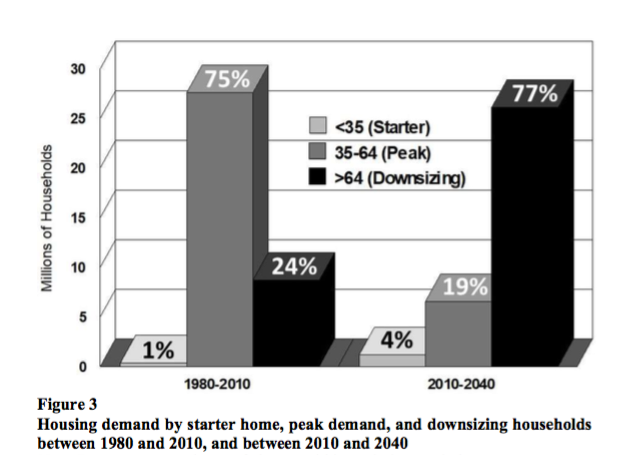What City Observatory did this week
America’s most and least segregated cities. Residential racial segregation is a fundamental and persistent aspect of system racism in the United States. Segregation cuts of disfavored groups from economic and social opportunity, and cities with higher levels of segregation tend to have lower levels of intergenerational economic mobility. In general, American cities have made progress—albeit slow progress—in reducing the levels of racial segregation.
This week, City Observatory presents data on the white/non-white dissimilarity index to show the level of racial segregation in the central, urban counties of the nation’s largest metro areas. The dissimilarity index measures come from the Federal Reserve Bank of St. Louis’s voluminous economic database, and rank cities from least to most segregated. Portland, Oregon has the lowest level of white/non-white dissimilarity of any large US metro area. That represents a dramatic change from 1970, when Portland was more segregated that typical large US metro area. We have data for the 50 largest US metro areas as of 2018, the latest year for which the underlying census data is available.
Must read
1. Portland adopts the nation’s most aggressive re-write of single family zoning. Sightline Institute’s Michael Andersen has an extremely comprehensive examination of Portland’s new residential infill project, which essentially allows four-plex, and even six-plex homes in the city’s single family zoned neighborhoods. The policy has been years in the making, and got a big push last year from the Oregon Legislature’s mandate that most cities allow four-plexes. Portland’s residential infill policy does that one better: it allows six-plexes in single family zones, provided half the units are set aside for households with incomes below 60 percent of the area’s median household income. The plan also makes important supporting changes: it eliminates nearly all off-street parking requirements for these new residential developments, and also allows buildings with more units to have greater floor space, incentivizing developers to build additional units rather than McMansions.

It started slowly, but the measure built a strong political following of activists who recognized that the key to addressing the city’s housing affordability problems is getting more units of housing built. And this measure leads the nation in showing how, technically and politically, this can be done. Plus, Andersen knows whereof he speaks: he and his colleagues at Sightline have been deeply involved in this effort for years.
2. Police-involved shootings by city. The murder of George Floyd by police has triggered a rising awareness of police violence. Sadly, its not isolated and uncommon. The website Cops in the Hood has tabulated data on “police-involved shootings”—itself a tortured and evasive term—and computed the per capita instance of such shootings in major US cities.
3. Why can’t we make cars safer for the people outside of them? CityLab’s David Zipper notes that we’ve invested considerable energy and regulatory emphasis on making cars safer for their occupants, with things like crush zones, seat belts and airbags. But in the US, little if any attention has been paid to making cars safer for people who aren’t seated inside their vehicle. In fact, the growing weight and height of cars, especially of trucks and SUVs has made them deadlier to others in collisions, especially to those on foot or cycling.
There are a whole range of technologies that could make cars safer for non-occupants, most notably using geographic positioning system information to limit vehicle speeds. That technology is already in place on 35 pound, $500 electric scooters (which pose negligible risks to non-occupants), but isn’t required on two-ton, $50,000 vehicles that are much more dangerous to others. The disparity speaks volumes about the deeply embedded privilege that drivers enjoy relative to those who don’t travel by car.
New Knowledge
The coming senior housing sell off. Inexorably, baby booms are getting older, with more and more turning 65 every year. As they age, boomer homeowners are increasingly likely to want or need to sell their homes. And the generations behind them are numerically smaller, less wealthy, and in many respects less enamored of low density living that boomers. The result, according to the University of Arizona’s Arthur Nelson, is that in the coming decade there’s going to be a glut of sellers and a dearth of buyers for large suburban homes, with predicable impacts on home prices.
Nelson marshals an impressive array of data about the tenure patterns of different generations, and contrasts these with the generational shift in preferences for smaller, more central locations. In his view, the market demand for housing will shift from three-quarters of increased demand coming for households in their peak housing consumption years, two three-quarters of household growth being among those looking to downsize.
Nelson argues that public policy ought to insulate seniors from any erosion in the value of their homes. Given that baby boomers have more wealth than any other generation, that seems like a stretch. Some softening of home prices, will by definition, make housing more affordable to younger generations who’ve had a hard time becoming homeowners because of high housing prices. The mismatch between a growing demand for urban locations and a glut of suburban housing seems like a very likely future.
Nelson, Arthur C. (2020) “The Great Senior Short-Sale or Why Policy Inertia Will Short Change Millions of America’s Seniors,” Journal of Comparative Urban Law and Policy: Vol. 4 : Iss. 1 , Article 28, 470-525.
In the News
Bloomberg Quint‘s Peter Coy draws from City Observatory’s most recent report, Youth Movement, in his article about urban inequality.
CityLab’s Laura Bliss quoted City Observatory Director Joe Cortright in her article examining Portland’s new residential infill policy.



